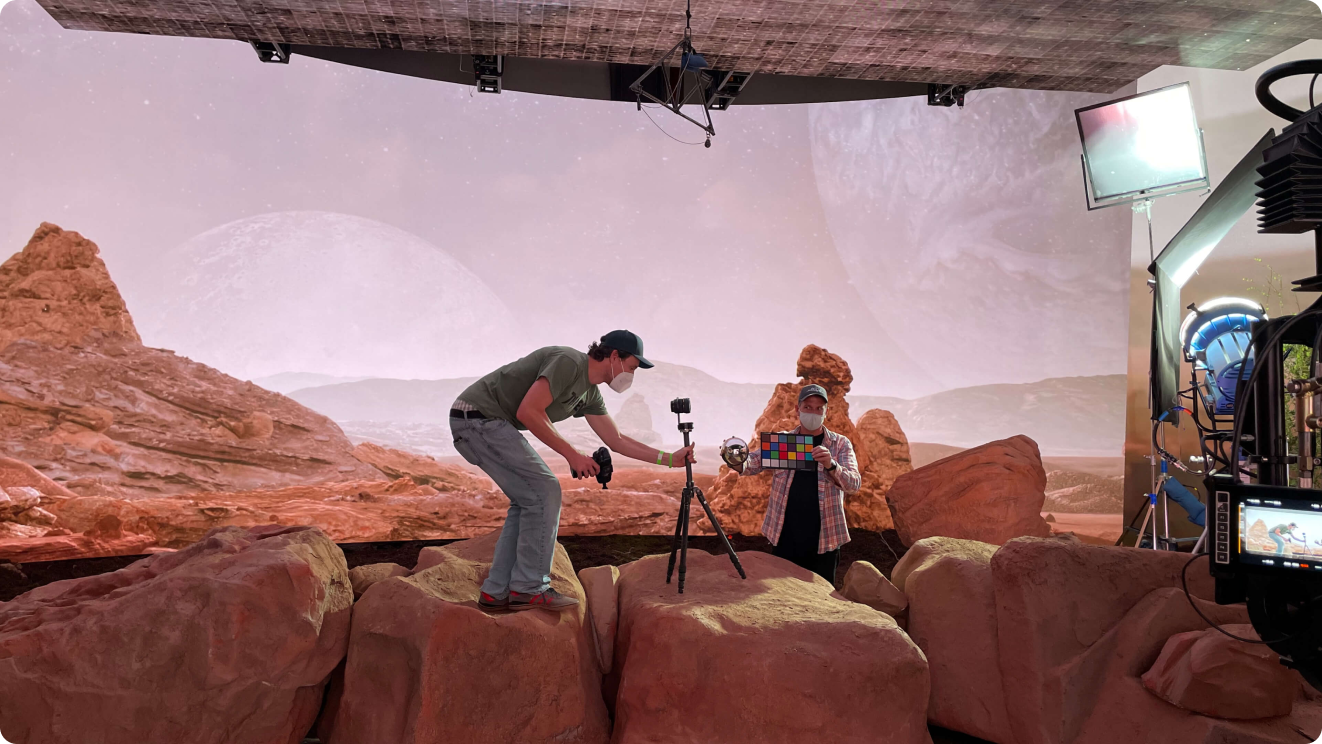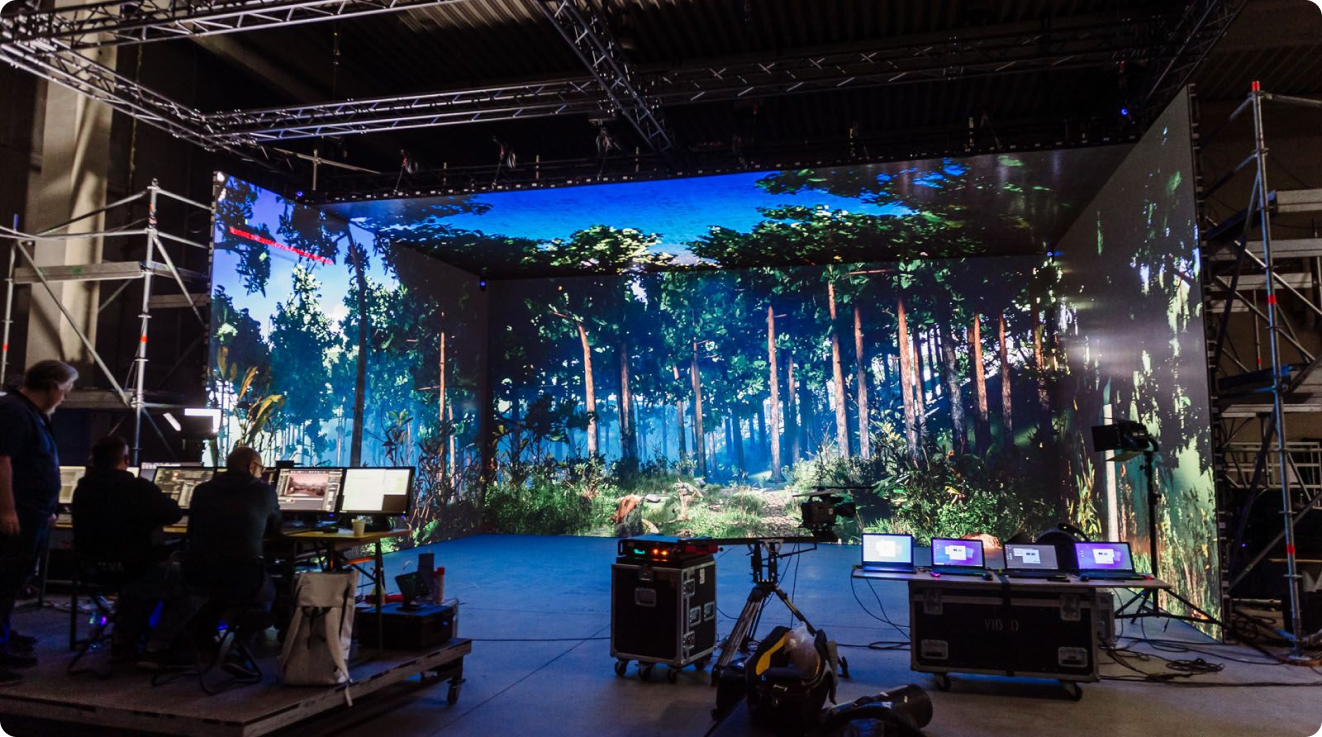
Devoted SpekEasy E19. Behind the Scenes of Palia: A Cozy Community Sim MMO
Continue reading "Devoted SpekEasy E19. Behind the Scenes of Palia: A Cozy Community Sim MMO"
Game development in today's digital world is an ever-evolving field that thrives on innovation. With the increasing desire for immersive gaming experiences, game studios are continuously seeking new ways to push the boundaries of what is possible. One revolutionary technology that has been making waves in the gaming industry is virtual production.
Virtual production is a cutting-edge technique that combines elements of the physical world with the virtual realm, allowing game developers to create astonishingly realistic environments and characters that captivate and enthrall their audience. This technology utilizes advanced motion capture systems, photogrammetry, real-time rendering, and other tools to seamlessly blend the real and virtual worlds.
One of the most significant advantages of virtual production is its ability to create highly immersive and visually stunning gaming experiences. By capturing the movements and actions of real actors and objects, game developers can translate their performances into the virtual environment, resulting in lifelike animations and interactions. This level of realism not only enhances the overall gameplay but also immerses players in a world that feels tangible and authentic.
Recently, we had the pleasure of hosting Noah Kadner, an esteemed figure in the Virtual Production world, on the Devoted SpeakEasy podcast. Noah Kadner is widely recognized for his expertise and contributions to the field. As the founder and editor-in-chief of VirtualProducer.io, he has been at the forefront of Virtual Production, providing valuable insights and resources to professionals in the industry.
 Noah Kadner's involvement in the Virtual Production community extends beyond VirtualProducer.io. He is also a co-founder of The Virtual Company, a platform dedicated to connecting professionals in the field and fostering collaboration. This initiative has played a significant role in promoting the exchange of knowledge and ideas within the Virtual Production community.
Noah Kadner's involvement in the Virtual Production community extends beyond VirtualProducer.io. He is also a co-founder of The Virtual Company, a platform dedicated to connecting professionals in the field and fostering collaboration. This initiative has played a significant role in promoting the exchange of knowledge and ideas within the Virtual Production community.
With a wealth of experience and knowledge, Noah Kadner has served as a senior writer for renowned publications such as Epic Games, Apple, and American Cinematographer magazines. His articles and reviews have shed light on the latest developments in Virtual Production technology, helping professionals stay informed and up to date with the industry's rapid advancements.
When considering a career crossover from video games to movies, there are several skills that artists may need to retrain and learn. While higher-resolution asset quality is essential, there are other aspects to consider. In video games, lighting is often approached for convenience rather than aiming for a photorealistic look. However, in movies, there is a greater emphasis on creating a cinematic style that resembles real-world photography. This adjustment can be a significant challenge for artists transitioning to the film industry.
Although not every position requires being on set, there is flexibility for artists specializing in modeling, texturing, or rigging. However, spending time studying photography, watching movies, and understanding cinematic styles can help artists develop the necessary visual sensibilities for the crossover. It's worth noting that video games are becoming increasingly cinematic, and many artists may already be on the path toward bridging the two worlds.

There are technical considerations as well. In video games, limitations such as frame rate and polygon count must be taken into account to ensure optimal performance. Understanding the target platform and optimizing scenes accordingly becomes crucial. If a scene is too complex and causes frame drops, artists may need to simplify or decimate their assets to maintain performance standards.
Another difference lies in lighting techniques. In movies, lighting may vary depending on the camera angle and the desired visual effect. For example, characters may need to be lit from the back in certain shots, while others require a different approach. Familiarizing oneself with these lighting variations and techniques is vital for a successful crossover.
Overall, artists considering a transition from video games to movies should be prepared to retrain and expand their skills, paying attention to the nuances of lighting, performance optimization, and cinematic aesthetics. By embracing these aspects, artists can bridge the gap between the two industries and explore new creative possibilities.
Virtual production can be likened to video game development, providing a basic understanding for those not deeply immersed in the field. Like game development, virtual production starts with a story and visualizing the sets, textures, environments, and locations. In the case of shooting in an LED volume, the sets are defined, determining what will be physically built and what will be projected on the LED wall.
For instance, imagine a scene where characters are driving down a street. In this case, a real car may be brought into the studio and parked in front of the screen. The scene of driving down the highway is then projected onto the LED volume, and the camera is positioned behind the car, looking through the windshield. This setup creates a convincing illusion, although certain angles may reveal the edges of the screen or the studio floor.

It is crucial to stick to camera angles that maintain the illusion and ensure that the background is out of focus, creating the perception of distance. The key takeaway is that since the footage needs to look photorealistic on camera, preparation is vital. The environments must be carefully designed and integrated with the foreground elements before shooting, as fixing issues later is not a feasible option. Pre-production allows for thorough preparation, while production is a costly stage where delays can significantly impact expenses.
In summary, virtual production shares similarities with video game development, but it also involves meticulous planning and integration of physical and virtual elements to create seamless and realistic visuals on camera. Preparation and attention to detail during pre-production are crucial to ensuring a smooth and efficient production process.
When it comes to finding opportunities in virtual production, platforms like LinkedIn can be highly beneficial. Many professionals in the field often secure gigs quickly through this business social network. To increase your chances, creating a 20-minute reel showcasing high-quality photorealistic environments explored within Unreal Engine can be a great approach. By including the hashtag #virtualproduction and sharing the reel, you are likely to attract the attention of interested individuals and potential employers.

Browsing the virtual production hashtag on platforms like LinkedIn can provide valuable insights and connect you with a diverse range of people who possess the required skills. It is not uncommon to see professionals with such skills receiving immediate recognition and inquiries about their current employment status. Thus, presenting your work in an engaging and choreographed manner rather than as a static and isolated showcase can make a significant difference.
While virtual production presents numerous opportunities, it is essential to consider potential challenges or areas that may require further exploration. For instance, understanding the specific technical aspects and limitations of virtual production, such as real-time rendering, performance optimization, and integrating physical and virtual elements seamlessly, is crucial. Additionally, staying updated with the latest advancements in technology and techniques within the virtual production field is vital to remain competitive and adaptable.
By acknowledging both the opportunities and challenges, individuals can navigate the virtual production industry effectively, capitalize on the growing demand, and make the most of the exciting possibilities it offers.